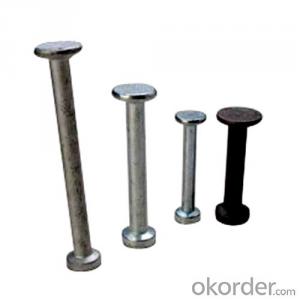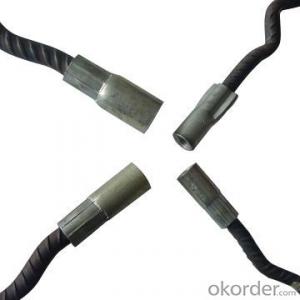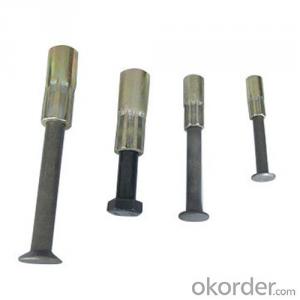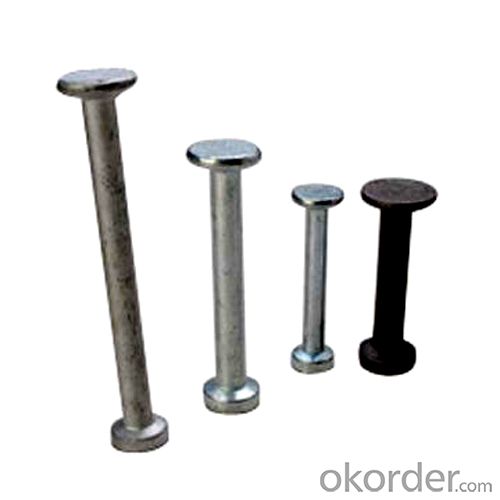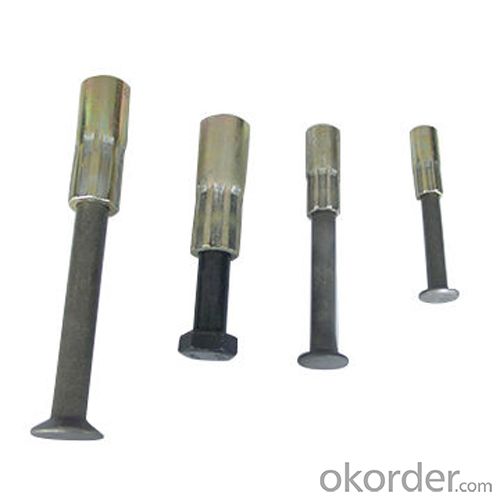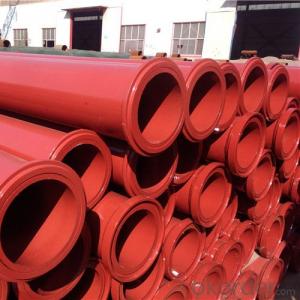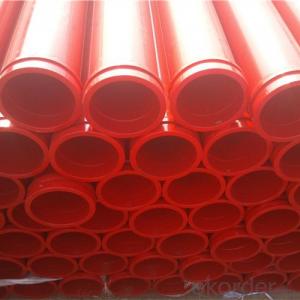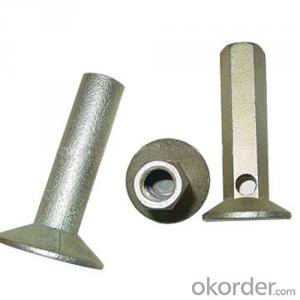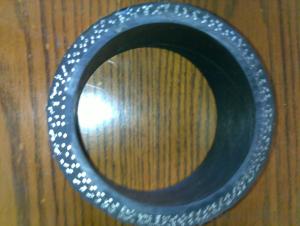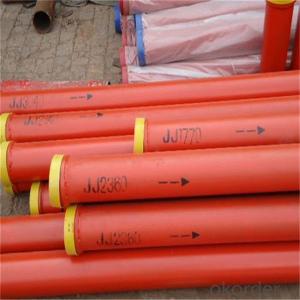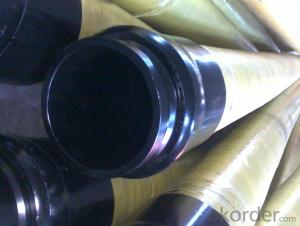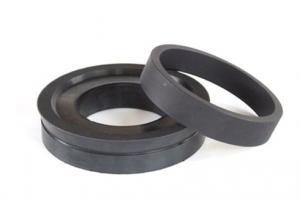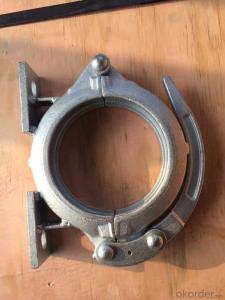Precast Concrete Lifting Spherical Head Lifting Anchor
- Loading Port:
- Tianjin
- Payment Terms:
- TT OR LC
- Min Order Qty:
- 100 pc
- Supply Capability:
- 10000 pc/month
OKorder Service Pledge
OKorder Financial Service
You Might Also Like
1. Specification:
1) Material: St52.3 or stainless steel
2) Diameter: 12mm, 17mm, 20mm, 22mm
3) Length: 40-200mm
4) Capacity: 0.5-12.5MT
5) Surface: plain, zinc plating, HDG
2. Products available:
Swift lift lifting eyes are used with the swift lift anchors to lift, handle and place precast concrete elements
3. Primary competitive advantages:
1. More than 10 years 4 years focus on building material manufacturing
Prompt delivery lead time within 25 days after confirming order
2. Eathu's products are enhanced by the factory QA and quality control checks during the production, if necessary each order can be send out with a certificate referring back to test
3. OEM/ODM capability: more then 10 years experience
4.Packaging and delivery:
Packaging details: goods packed in cartons and then on the pallet
Delivery detail: within 25 days after getting payment
· Service
· Small Orders Accepted
· More than 10 Years Experience
· Testing before shipping
Market:
Mid East/Africa
North America
Western Europe
FAQ:
Q1: How long about delivery time Concrete Lifting anchors ?
A1: The delivery time will be very short, normally we keep the raw materials for old customers and sometime we also keep stock products to
make sure delivery time in any emergency cases.
Q2: How do we guarantee the quality of our Concrete lifting anchors?
A2: We have established an advanced quality management system which conducts strict quality tests at every step, from raw materials to the final product. At the same time, we provide extensive follow-up service assurances as required.
Q3: How soon can we receive the product after purchase?
A3: Within three days of placing an order, we will book the vessel for goods. The specific shipping date is dependent upon international and government factors, but is typically 7 to 30 workdays.
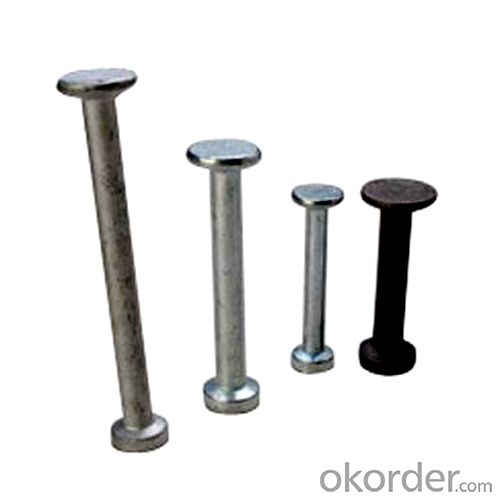
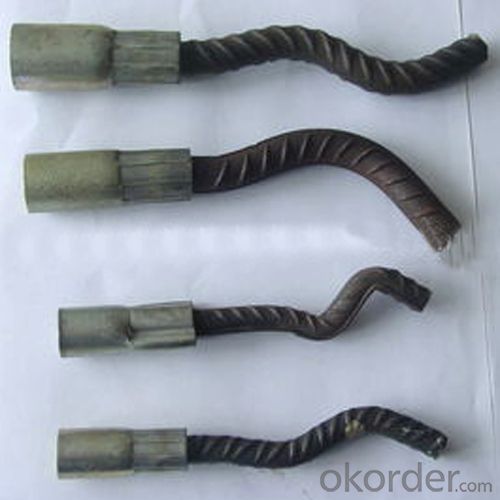
- Q: Can concrete pump spare parts be pre-assembled or pre-tested before installation?
- Yes, concrete pump spare parts can be pre-assembled and pre-tested before installation. This practice ensures that the spare parts are functioning properly and ready for immediate use, saving time and effort during the installation process. Pre-assembly and pre-testing also help identify any potential issues or defects, allowing for necessary adjustments or replacements before installation, ensuring the smooth operation of the concrete pump.
- Q: What is the function of a concrete pump hopper grate lever?
- The function of a concrete pump hopper grate lever is to control the opening and closing of the hopper grate, allowing for the smooth flow of concrete into the pump.
- Q: How does a hopper agitator motor ensure consistent concrete mixing?
- Consistent concrete mixing is guaranteed with the use of a hopper agitator motor, which is responsible for providing the required agitation and movement within the hopper. By rotating and moving the agitator blades, the motor effectively mixes the concrete ingredients. The main purpose of the hopper agitator motor is to avoid the settling or separation of the concrete during the mixing process. Through its rotation, a swirling motion is generated inside the hopper, ensuring even distribution and thorough blending of all the ingredients. This prevents any formation of clumps or irregularities in the final concrete mixture. Moreover, the motor also aids in breaking up any lumps or clusters that may have formed within the hopper. This action further enhances the uniformity of the mixture, ensuring proper blending of components such as cement, aggregates, water, and additives. Furthermore, the continuous movement of the agitator blades helps in maintaining the desired consistency and homogeneity of the concrete mix. It prevents heavier particles from settling at the bottom of the hopper, ensuring consistent mixture throughout the entire mixing process. In conclusion, the hopper agitator motor is of utmost importance in achieving consistent concrete mixing. Its role includes providing necessary agitation, preventing segregation, breaking up lumps, and maintaining uniformity. The motor's rotational motion and well-designed agitator blades contribute to well-mixed and homogeneous concrete, which is crucial for durable and high-quality concrete structures.
- Q: How do I properly maintain and replace hydraulic valves in concrete pump spare parts?
- To ensure the smooth operation and long life of your concrete pump spare parts, it is crucial to properly maintain and replace the hydraulic valves. Here are some guidelines to follow: 1. Conduct Regular Inspections: Regularly inspect the hydraulic valves for wear, damage, or leaks. Look for visible defects like cracks, corrosion, or other signs of deterioration. It is important to identify and address any issues early on to prevent further damage. 2. Maintain Cleanliness: Keep the hydraulic valves clean to prevent dirt, debris, or contaminants from entering the system. Use an appropriate cleaning agent and a lint-free cloth to wipe the valves and remove any buildup. 3. Ensure Proper Lubrication: Proper lubrication is vital for the smooth functioning of hydraulic valves. Consult the manufacturer's guidelines to determine the suitable lubricant and the recommended lubrication schedule. Apply the lubricant as instructed. 4. Promptly Replace Damaged Valves: If a hydraulic valve is beyond repair or excessively worn out, it is crucial to replace it promptly. Consult the equipment's manual or seek guidance from the manufacturer to identify the correct replacement valve. Make sure the replacement valve matches the required specifications for your concrete pump. 5. Seek Professional Assistance: While operators can handle some maintenance tasks, it is advisable to seek professional assistance for complex maintenance and replacement procedures. Professional technicians possess the expertise and knowledge to handle hydraulic valves safely and effectively. 6. Prioritize Safety: Always adhere to proper safety protocols when working with hydraulic valves. Release all pressure and fully depressurize the system before attempting any maintenance or replacement. Wear appropriate personal protective equipment, such as gloves and safety goggles, to safeguard yourself from potential hazards. In conclusion, regular maintenance, timely replacement, and adherence to safety guidelines are crucial for maintaining and replacing hydraulic valves in concrete pump spare parts. By following these steps, you can ensure the reliable and efficient operation of your equipment.
- Q: What are the indications of a faulty concrete pump hydraulic motor?
- There are several indications that can point to a faulty concrete pump hydraulic motor. Some common signs to look out for include: 1. Loss of power: If the hydraulic motor is not functioning properly, you may notice a significant loss of power in the concrete pump. The motor may struggle to generate enough force to pump the concrete effectively, resulting in slower or weaker output. 2. Excessive noise or vibrations: A faulty hydraulic motor may produce unusual noises or vibrations during operation. This could be a result of damaged internal components or misalignment, indicating a problem with the motor. 3. Fluid leaks: Hydraulic motors rely on the proper flow and pressure of hydraulic fluid to function correctly. If you notice any fluid leaks around the hydraulic motor or its associated components, it could be a sign of a faulty motor that needs attention. 4. Overheating: When a hydraulic motor is faulty, it may overheat due to increased friction or internal malfunctions. If you notice excessive heat coming from the motor or associated components, it is essential to address the issue promptly to avoid further damage. 5. Inconsistent or jerky movement: A faulty hydraulic motor may cause the concrete pump to operate inconsistently or jerkily. This can result in uneven pouring or difficulty in controlling the flow of concrete, indicating a problem with the motor's performance. 6. Increased energy consumption: If the hydraulic motor is faulty, it may require more energy to operate properly. This can lead to a noticeable increase in energy consumption, which can be observed through higher electricity bills or a greater strain on other parts of the pump's system. It is important to note that these indications may vary depending on the specific make and model of the concrete pump hydraulic motor. It is always recommended to consult the manufacturer's guidelines or seek professional assistance to diagnose and address any issues with the hydraulic motor effectively.
- Q: How can one store and handle concrete pump spare parts to maintain their quality?
- To maintain the quality of concrete pump spare parts, it is crucial to store and handle them properly. Firstly, these spare parts should be stored in a clean and dry environment, away from moisture and direct sunlight. They should also be protected from dust and debris by using suitable covers or packaging. Additionally, it is important to handle them with care, avoiding any rough or improper handling that could cause damage. Regular inspection and maintenance of the spare parts should also be conducted to identify any signs of wear or corrosion, ensuring they are in optimal condition when needed for use.
- Q: How do I properly maintain and replace hydraulic motors in concrete pump spare parts?
- To ensure smooth operation and long-lasting performance of concrete pump spare parts, it is crucial to properly maintain and replace hydraulic motors. Here are some effective steps to guide you: 1. Regularly inspect the hydraulic motors to detect any signs of wear, damage, or leaks. Ensure the fluid levels are at the recommended levels. 2. Keep the hydraulic motors clean by removing dirt, debris, and contaminants. This prevents overheating and minimizes the risk of internal component damage. 3. Follow the manufacturer's recommendations and regularly check and change the hydraulic fluid. Clean and replace filters to prevent damage-causing particles. 4. Lubricate the hydraulic motors according to the manufacturer's instructions. This reduces friction and wear on moving parts, improving overall performance and lifespan. 5. Operate the concrete pump within the recommended load and pressure limits specified by the manufacturer. Excessive pressure or overloading can stress the hydraulic motors, leading to premature failure. 6. Keep track of the service life and usage of hydraulic motors. Over time, they may become less efficient. Promptly replace them to avoid disruptions to concrete pumping operations. 7. If unsure about maintenance or replacement, seek professional assistance. Professionals have the expertise to carry out tasks correctly, ensuring safety and optimal performance of concrete pump spare parts. By following these steps, you can effectively maintain and replace hydraulic motors in concrete pump spare parts, ensuring equipment longevity and efficiency.
- Q: How can a faulty electric motor affect the pump's performance?
- A faulty electric motor can significantly impact the pump's performance. It may cause the motor to run at a slower speed, leading to reduced pumping capacity and lower flow rates. Additionally, a faulty motor can result in increased power consumption, decreased efficiency, and overheating issues. In severe cases, the motor may completely fail, causing the pump to stop working altogether. Therefore, addressing any issues with the electric motor promptly is crucial to maintaining optimal pump performance.
- Q: How do concrete pump spare parts contribute to the overall performance of the pump?
- Concrete pump spare parts play a crucial role in enhancing the overall performance of the pump. These spare parts are specifically designed to withstand the harsh and demanding conditions of pumping concrete, ensuring the efficiency and longevity of the pump. One of the key contributions of concrete pump spare parts to the overall performance of the pump is their ability to enhance the pumping capacity and efficiency. These spare parts, such as the pump cylinders, pistons, and valves, are designed to provide a smooth and consistent flow of concrete without any interruptions. By maintaining a steady flow, these spare parts help to maximize the pumping capacity of the pump, enabling it to handle larger volumes of concrete in a shorter amount of time. Moreover, concrete pump spare parts also contribute to the overall performance of the pump by improving its durability and reliability. The spare parts are made from high-quality materials, such as hardened steel and wear-resistant alloys, which are specifically chosen to withstand the abrasive nature of concrete. This ensures that the pump can operate continuously without experiencing premature wear or failure. In addition, the proper functioning of concrete pump spare parts also ensures the safety of the pump operators and the surrounding environment. For instance, the wear plates and cutting rings help to prevent concrete leakage, reducing the risk of accidents and environmental contamination. Similarly, the seals and gaskets ensure a tight and secure connection between different components, preventing any potential leaks or malfunctions. Furthermore, concrete pump spare parts also contribute to the overall performance of the pump by reducing downtime and maintenance costs. As these spare parts are subjected to wear and tear during operation, they are designed to be easily replaceable. This allows for quick and efficient repair or replacement of damaged parts, minimizing the downtime of the pump. Additionally, by using genuine and high-quality spare parts, the need for frequent repairs and maintenance is reduced, resulting in lower overall maintenance costs. In conclusion, concrete pump spare parts are essential components that significantly contribute to the overall performance of the pump. They enhance the pumping capacity, durability, and reliability of the pump, ensuring a smooth and efficient operation. Moreover, these spare parts also promote safety, reduce downtime, and minimize maintenance costs, making them indispensable for the optimal performance of concrete pumps.
- Q: How often should hopper agitator blades be inspected or replaced in a concrete pump?
- Hopper agitator blades in a concrete pump should be inspected regularly and replaced as needed. The frequency of inspections and replacements depends on a variety of factors such as the amount of use, the type of concrete being pumped, and the conditions in which the pump is operated. Generally, it is recommended to inspect the hopper agitator blades at least once every three to six months. This allows for early detection of any signs of wear, damage, or deterioration. However, if the pump is used heavily or operates in harsh conditions, more frequent inspections may be necessary, such as once a month or even weekly. During inspections, the blades should be checked for any signs of cracks, chips, or excessive wear. Additionally, any buildup of hardened concrete or other debris should be removed to ensure optimal performance. If any damage or significant wear is detected, the blades should be replaced promptly to prevent further deterioration and potential breakdowns. It is important to note that regular maintenance and proper cleaning of the hopper agitator blades can help prolong their lifespan. Following manufacturer's recommendations for maintenance, including lubrication and cleaning, can significantly reduce the need for frequent replacements. Ultimately, the frequency of inspections and replacements for hopper agitator blades in a concrete pump should be determined based on the specific conditions and usage of the pump, and it is advisable to consult the manufacturer's guidelines for more specific recommendations.
Send your message to us
Precast Concrete Lifting Spherical Head Lifting Anchor
- Loading Port:
- Tianjin
- Payment Terms:
- TT OR LC
- Min Order Qty:
- 100 pc
- Supply Capability:
- 10000 pc/month
OKorder Service Pledge
OKorder Financial Service
Similar products
Hot products
Hot Searches
Related keywords
